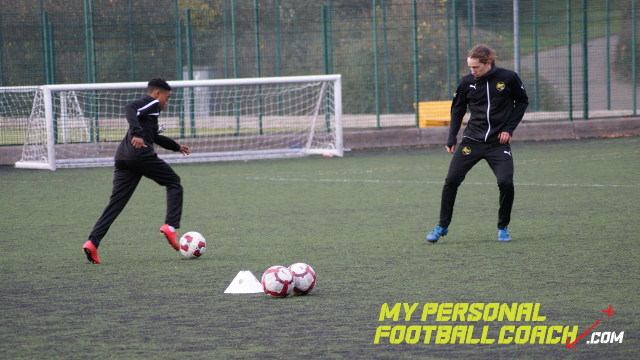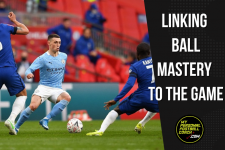
We seem to be stuck in a battle in the coaching fraternity amongst some who want a laissez-faire attitude to player development.
When we talk about good technique we talk about players who are masters of the ball, players who can manipulate the ball and deliver at will. More specifically we talk about players who can dominate 1v1 and stay on the ball under pressure.
How do we achieve this? We do it mainly with the use of opposed practices and small sided games (SSGs), 1v1s , 2v2’s, 3v3’s & 4v4’s. These games force players to stay on the ball, force them to make decisions and force them to solve problems.
The breakdown in understanding comes from specialists who link technical coaching to FA level 1 or 2 courses which is a fundamental problem. These courses are designed around kicking the ball and getting rid of it as quickly as possible which is nothing like what I would call technical coaching. The reason for this could be that English football has traditionally been very direct and the coaching courses have always reflected this. I am fortunate that I began my football education abroad so I was never initiated into old modes of FA ‘technical’ coaching using passing drills.
Myself a product of inner city London, I grew up playing in the concrete cages of London where individuality and bravado ruled. An environment where if you couldn’t be on the ball and keep it then you were nothing.
I demand that players are able to stay on the ball and this is where I believe as coaches at the foundation phase we must make a difference. Yes, I am manipulating the environment but you may ask why? Because all top players need to stay on the ball under pressure and players need to solve the problems themselves. Just as a teacher in school I am developing traits that will support these youngsters later in their careers.
I also believe in the coaching of 1v1 skills, because I have seen first hand how this improves and actually fosters creativity. I was fortunate enough to talk to Sue Cowley recently, (suecowley.co.uk) the FA’s creativity expert and like myself a qualified Primary school teacher, she agreed with me that showing new techniques doesn’t stunt creativity, it can actually help enhance it. Just as when you show children new art techniques such as shading, they can then go on to explore and develop it. It’s not about me being a ‘Lord of technique’ another myth propagated by the misinformed, but by being a facilitator, supporting young players to hopefully go on and become the stars of tomorrow. We do this to support a culture of 1v1 and players who can dominate and stay on the ball under pressure. Let me be clear that there is no perfect technique construct, rather players must be able to execute effectively in all the key technical areas of football. If they are having issues with one or more areas then it may require a coach to step in and support the player.
Another huge misrepresentation of technical coaching is the insinuation that we are imposing techniques on players. No, we are modelling and players choose when and if they want to use them. It’s not about me as the coach! It’s about the players! They are better than me and will develop new skills and techniques of their own. They are always going to develop better ideas and strategies than me.
The coaching of 1v1 skills at a young age is about developing ball control and key movements. Importantly this should be on both sides that the player can then develop, improve on and make their own. Just as when I was as Primary school teacher I must recognise the moment when players need support, when they need challenging and when they just need to be left alone. The goal must be that when players leave the foundation phase they must be technically effective in all core areas.
This non-dynamic and unchallenging approach won’t improve players and doesn’t qualify as deliberate practice. When we as coaches do ball work (ball mastery & 1v1 skill work) we must take extra care to have a high intensity and challenging environment because it’s unopposed. If it’s too easy or boring we won’t get the desired change from the players. It’s also important we contextualise the skills and give players the opportunity to use them in opposed situations. It’s imperative we have the expectation that players use these skills in games, give them the opportunity and celebrate, even in the event of an unsuccessful attempt.






